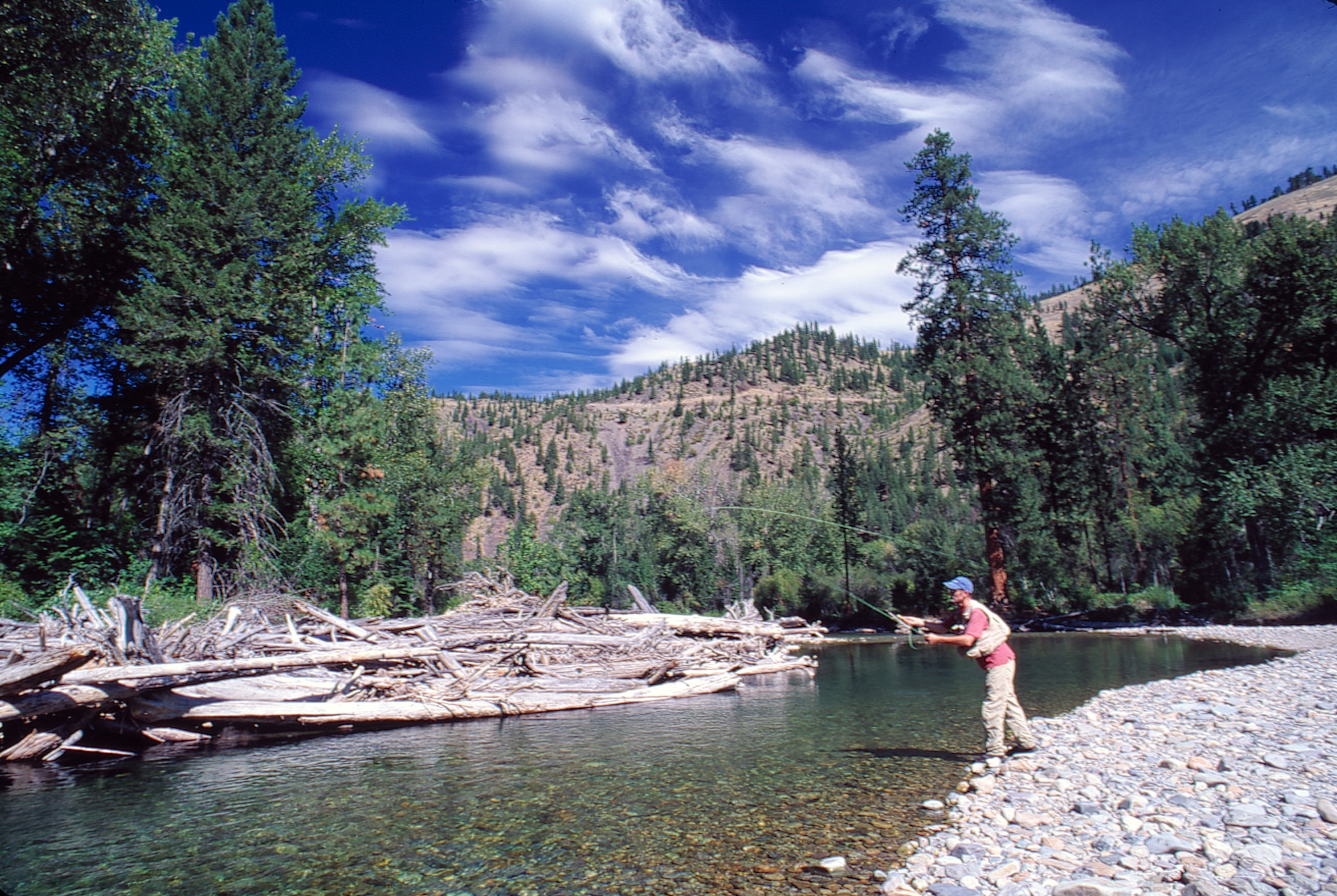
24 Jul Under the Sheltering Pine
CAMPED ON FISH CREEK UNDER A FULL SEPTEMBER MOON, I admired Montana’s largest ponderosa pine soaring majestically over the glittering stream. It was one of those rare moments when everything in the world seems perfectly aligned and full of promise — and I hadn’t even strung up my trusty Sage 5-weight.
The tree that sparked my reverie was more than 350 years old, somehow enduring epic fires, floods, logging and the vicissitudes of Northern Pacific railroad history. It was a venerable specimen even when Lewis and Clark’s men struggled westward over the snowy Bitterroot Mountains in September 1805, just to the south at Lolo Pass.
The epic ponderosa on Fish Creek is a totem for the tenacious wildness that remains in this wonderful watershed: native bull and Westslope cutthroat trout; abundant wildlife; and a rugged landscape that has survived significant challenges and land ownership changes relatively intact.
Much of the upper basin is part of the Lolo National Forest, established by President Theodore Roosevelt in 1906. Lower Fish Creek has historically included a mix of state and private lands, including many square miles owned by the Plum Creek Timber Company. Recently facing the prospect of large-scale development, this reach is now home to Montana’s newest state park and an adjacent wildlife management area. So the tree and its gauzy moonlight halo also seemed emblematic of a trait that’s a little scarce these days: hopefulness.
And isn’t that what wandering along a stunning, saved stream with a fly rod is all about? As the Scottish author John Buchan wrote, “The charm of fishing is that it is the pursuit of what is elusive but attainable, a perpetual series of occasions for hope.”
A Biologically-Rich Watershed
FISH CREEK IS A MAJOR TRIBUTARY of the middle Clark Fork River, flowing into the brawling Alberton Gorge 50 river miles downstream from Missoula, near the tiny town of Tarkio. The main stem of Fish Creek is nine miles long, fracturing upstream into numerous feeders like the North, West and South Forks. Pure, cold arteries rise in isolated mountain trout tarns hidden under the Bitterroot Divide, just east of the Idaho border: Siamese, French and Cedar Log Lakes are only some of these alpine diamonds.
Montana Fish, Wildlife & Parks (FWP) fisheries biologist, Ladd Knotek, says “One thing that makes Fish Creek unique is that it is surrounded by roadless areas in its headwaters.” Parts of this expanse are included in the long-proposed 250,000-acre Great Burn Wilderness Area: This remote, biologically-rich terrain is traced by trails ascending pristine drainages, a haven for hiking or horse-packing anglers, hunters and campers.
The Fish Creek basin provides critical habitat for elk, deer and moose, and is an important linkage zone for carnivores like grizzly bears, wolverines and Canada lynx moving between Montana’s Mission Mountains and Rattlesnake Wilderness Area and the sprawling Bitterroots. Wolves, black bears, mountain lions, and approximately 115 bird species also utilize the valley.
Appropriately named, Fish Creek is one of western Montana’s finest trout streams. A 2010 FWP environmental assessment summarizes the drainage this way:
It is a wild and productive watershed with unusually high fisheries and aquatic values. Fish Creek supports some of the best remaining native fish populations in the area, provides a major source of salmonid recruitment for the Clark Fork River, and offers an excellent trout fishery throughout most of its reaches.
Fish Creek is a fly angler’s dream. After the powerful surge of spring runoff, its crystal water sweeps through a myriad of riffles, runs, and logjam-lined pools. Technicolor cobbles sparkle brightly on the bottom. In places, the current has scoured holes deep enough to submerge a tank. Most of the water is easy to wade, but too small to readily float.
Knotek says the stream holds five species of trout — Westslope cutthroats, bulls, browns, brookies, and rainbows — along with mountain whitefish. The watershed supports more bull trout spawning redds than all other middle Clark Fork tributaries combined, as well as more than 20 Westslope populations, many of which are genetically pure. Bulls are listed as threatened under the federal Endangered Species Act and may not be targeted by anglers here. Cutthroats are fair game, but catch-and-release regulations are in effect below the confluence of the South and West forks.
Fish Creek offers a diverse parade of mayfly, caddis and stonefly hatches. As on many cutthroat streams, however, unless fish are keying on a particular bug, attractors are excellent pattern choices: Wulffs, Humpies, Renegades, Stimulators, and hopper permutations all take trout. Drifted deep along the cobbles, under logs, and against root wads, a Bitch Creek, Bugger, Muddler, or Kaufmann Golden Stone might provoke the stream’s larger residents, including beasts that flunked their anger management class.
For visiting anglers, there are primitive, streamside FWP campgrounds at both the Big Pine and Forks fishing access sites (FAS). Upstream on the West Fork, there is also a quiet Forest Service campground and backcountry trailhead at Clearwater Crossing. Additionally, there are numerous informal camps tucked along the stream.
For folks desiring a place to hang their waders without camping, the Hole-in-the-Wall Ranch affords lodging and a restaurant in the peaceful West Fork valley. In addition, the ranch offers whitewater rafting through the Alberton Gorge, along with guided trail rides, backcountry pack trips, hunts, and angling on the Clark Fork and Fish Creek.
Surviving the Big Burn
IN JUST TWO DAYS IN AUGUST 1910, portions of the upper Fish Creek watershed were scorched by the Big Burn, the largest wildfire in American history. Fed by hurricane-force winds sweeping through tinder-dry forests, it consumed 3 million acres in eastern Washington, Idaho, and northwestern Montana, incinerating several towns, killing 87 people, and tinting sunsets all the way to New York City. The maelstrom was an event that might be expected to occur once in 1,000 years.
The fire changed attitudes and approaches toward wildfire in the U.S. Forest Service, established only five years earlier. After the Big Burn, every blaze was considered an evil to be immediately vanquished. As scientists realize now, the resulting lack of natural, lower-intensity wildfires during the past century helped create millions of acres of overgrown, disease-ridden forest that are ripe for more massive conflagrations.
The heroism of the nearly 10,000 motley, ad hoc firefighters who fought the monster generated public support for the fledgling Forest Service, and the revolutionary vision that former President Theodore Roosevelt (1901-1909) had to expand and conserve the nation’s public lands. Ironically, the Big Burn helped preserve the roadless character of much of the region, as it lost its attractiveness to loggers.
Neither the Big Burn nor subsequent fires seared everything along Fish Creek. The fire crazily leapfrogged over some areas, including groves of 500-year old western red cedars. Montana’s patriarch ponderosa also escaped, while brethren further south and west were consumed by fierce crown infernos. Healthy ponderosa stands depend on moderate, periodic ground fires, protected by their fire-resistant, vanilla-scented bark. The Big Burn was more like an atomic blast.
Occasional fires can also enhance streams like Fish Creek, releasing carbon and nitrogen that improve conditions for aquatic vegetation, insects and trout that have evolved in fire-prone landscapes. Additionally, burned trees toppling into the stream create excellent cover for fish. A cataclysm like the Big Burn, conversely, can generate massive amounts of erosion that harms streams.
Fish Creek’s colossal ponderosa, located at the Big Pine FAS, is the third largest in the country: The Methuselah is 200-feet tall, more than 6-feet in diameter, and contains enough lumber to build two average-sized houses. Admiring the stately conifer, it is understandable that the name of the species was derived from its sometimes ponderous size. Historically, ponderosas helped build the West, providing timber for telegraph poles, railroad ties, mine bracings and many homes. Prior to the Big Burn, Indians utilized the ponderosa’s seeds and inner bark for food; the pitch was used to waterproof their wooden canoes. It seems apt that ponderosas are Montana’s state tree.
Even though ponderosas have roots that can spread 100 feet from the trunk and go down 30 feet, FWP staff became concerned that Fish Creek was eroding the base of the renowned tree. Logs and root wads were placed along the cut bank to protect the ponderosa, in addition to providing another benefit — excellent trout cover. Above the water, a variety of bird species utilize Fish Creek ponderosas, including the western tanager, chipping sparrow, mountain bluebird, northern flicker, Steller’s jay, great-horned owl and Cooper’s hawk.
Near Big Pine, the Great Burn also spared the Fish Creek ranch homesteaded by frontier author Andrew Garcia, who lived in the valley for decades until his death in 1943, at the age of 88. Garcia came to Montana with big dreams and a herd of Texas cattle in 1868, making a living hunting, trapping, farming, outfitting, and working as a U.S. Army agent during the Indian wars.
While at the ranch, Garcia wrote a memoir of his many picaresque travels and adventures — Tough Trip through Paradise — as cultural change cascaded through the Northern Rockies. His manuscript was discovered in 1948 in a dynamite box in his cabin, finally published in 1967. During his life Garcia married three Indian women, one of whom was a beautiful Nez Perce named In-who-lise, who had been wounded in the 1877 Battle of the Big Hole. Of their wedding, he wrote:
Little did I know that day that I was leaving the white man and his ways forever and that I would become inoculated with the wild life of the Indian and be one of them, to live and run with them, wild and free like the mustang.
The Northern Pacific Morphs to Plum Creek
DURING THE MANY EVENINGS Garcia labored on his manuscript by lamplight, his reminiscences were punctuated by the lonely blast of train horns. Far below his Fish Creek abode, nighttime travelers were swiftly cruising from Chicago to Seattle in an unprecedented, electrified luxury that might have astonished Garcia — or even today’s trippers. Like many Montana streams, the Fish Creek drainage was profoundly shaped by labyrinthine railroad history.
The adjacent Clark Fork valley was utilized by two great transcontinental railroads, first the Northern Pacific beginning in 1883, then the Chicago, Milwaukee, St. Paul & Pacific Railroad (i.e., The Milwaukee Road) in 1909. The railroads impacted the landscape in many ways, including local place names: The town of Alberton and the gorge below it, for example, were christened after Milwaukee president, Albert Earling. And nearby Tarkio was named by a group of rail construction workers hailing from Tarkio, Mo.
The old Milwaukee Road corridor, across the Clark Fork from Fish Creek, finally fell silent in 1980 and was abandoned; in recent years, portions have been converted into an exceptional trail. Montana Rail Link freight trains now ply the old Northern Pacific right-of-way, which crosses Fish Creek near its mouth.
Because of the Northern Pacific, the Fish Creek drainage has long been a complex checkerboard of land ownership. This schizophrenic geography is a legacy of 19th-century Western expansion: The federal government bestowed railroads a right-of-way and alternating (square mile) sections of public land to help them raise development capital.
In 1864, President Abraham Lincoln signed the largest of the railroad land grants to the Northern Pacific, eventually totaling 44 million acres (nearly the size of Washington State), conditioned on developing a route from Lake Superior to the Pacific Ocean. In Montana Territory, the railroad received approximately 17 million acres, a swath that included 20 sections per mile on each side of the route. The Northern Pacific quickly became the largest landowner in Montana after the federal government, and a major holder along Fish Creek.
In 1970 the Northern Pacific and Great Northern Railroads, along with their expansive land holdings, became part of the Burlington Northern Railroad. Then in the 1980s, Burlington Northern split into a railroad and a holding company to manage remaining 19th-century grant lands; the latter led to the Plum Creek Timber Company, named after a northern Minnesota stream where an early lumber mill was built.
The Fish Creek timber land has an especially convoluted past, with themes running deep into the tumultuous mainstream of Montana’s historic development. The Anaconda (Amalgamated) Copper Mining Company purchased the property from the Northern Pacific in 1907 to supply lumber for its mining operations. Anaconda in turn sold it to Champion International in 1972; Plum Creek acquired the property in 1993, part of a massive 867,000-acre acquisition in western Montana.
Plum Creek became the largest private property owner in both Montana and the United States, with holdings of approximately 1 million acres in the Treasure State and 8 million acres nationwide. Throughout the northwest U.S. and elsewhere, the Seattle-based company is a key landowner along many miles of outstanding trout water. Portions of Plum Creek’s Fish Creek property were heavily logged in the past, with a 500-mile spider web of erosive timber roads winding perilously up mountainsides.
Yet, as on its other Montana lands, the company has generously provided public recreational access along Fish Creek. Given this history of public access, Lee Bastian — FWP’s regional parks manager in Missoula — says a burning question on the minds of western Montana recreationists for the past decade has been this: “What’s going to happen if Plum Creek pulls out?”
A Montana Legacy: Coloring in the Fish Creek Checkerboard
ALTHOUGH PLUM CREEK REMAINS a major timber producer, it substantially shifted its business model when it reorganized in 1999. As a result, the company has been selling thousands of acres of timberland in Montana and other states for residential development. In 2007, prior to the current economic slump, land sales comprised approximately a quarter of Plum Creek’s revenue, with many thousands of acres still available for sale. Until a few years ago, this was where much of lower Fish Creek was headed.
Many Montana conservationists, recreationists, and politicians expressed concerns about the loss of traditional public access, natural resource impacts of subdivision, increased challenges of managing public lands adjacent to new developments, and fiscal impacts to local governments expected to provide far-flung residences with fire protection and other services.
At the same time, Plum Creek earned kudos for adopting Sustainable Forestry Initiative principles; implementing riparian management practices, developing a habitat conservation plan for bull trout, and cooperating on a Native Fish Habitat Conservation Plan. And — perhaps most significantly — a considerable portion of the western Montana land Plum Creek sold has been for groundbreaking conservation initiatives. During the past decade, this has sparked a seismic shift in land ownership and management, benefiting prime trout water.
In the fabled Blackfoot River watershed, for example, Plum Creek agreed to sell approximately 90,000 acres as part of the Blackfoot Community Project. The Nature Conservancy (TNC) purchased much of the land, reselling it to public agencies and private buyers, with attached conservation provisions developed by local residents. Similar conservation work occurred in the Thompson and Fisher watersheds in northwest Montana, with a $34 million deal between Plum Creek, FWP, The Trust for Public Land (TPL), and other partners. The drainages comprise one of Montana’s largest conservation easements, protecting 142,000 acres and ensuring public access.
But that’s only the beginning: Since 2008, the cooperative Montana Legacy Project has marshaled resources to purchase an additional 310,000 acres of Plum Creek’s forest land. In addition to federal dollars, project support has come from the state, TNC, and TPL. Collectively, the $500 million acquisitions will protect a quarter of Plum Creek’s Montana acreage. Much of this land has already been transferred to state and federal agencies, with a goal of keeping the land open to outdoor recreation while still allowing appropriate timber production.
As part of the Montana Legacy Project, 41,000-acres of Plum Creek land in the Fish Creek drainage were purchased by TNC. Additional areas identified for project acquisition include parts of the Swan and Clearwater River watersheds, the lower Blackfoot River drainage, and other portions of the Clark Fork and Bitterroot basins. In a relatively unheralded, bipartisan manner something remarkable occurred: The Montana Legacy Project ranks among the largest privately initiated land conservation purchases in American history.
Reflecting on this achievement, Jim Berkey — TNC’s western Montana land protection specialist in Missoula — observes, “Over and over again, Montanans have shown passion and commitment for protecting their natural resource heritage. All of these projects take a community effort and a whole suite of partners.”
Immediately following its Fish Creek purchase, TNC collaborated with Trout Unlimited, the Lolo National Forest, and FWP on various stream improvement efforts, removing culverts impeding spawning runs, rehabilitating approximately 100 miles of closed roads, controlling weeds, and revegetating banks. Looking toward the future, Bastian observes, “The area will take some time to recover, but I think we’ll be able to get back to how it was.”
In early 2010, FWP began public review of a proposal to purchase TNC’s Fish Creek property. After adjustments based on public comments and funding constraints, FWP decided to move forward with the acquisition and establish a 34,780-acre wildlife management area and a 6,200-acre state park. A mix of state and federal funds were used to meet the $17.4 million purchase price, which was a bargain given the property was appraised at nearly $22 million. The FWP Commission and state Land Board unanimously approved the purchase in March 2010; it was completed three months later. For such a large, complex land deal, it all happened with remarkable speed.
Knotek reflected “FWP had been trying to protect the property for 10 years.” If TNC hadn’t stepped in when it did “the land would have been subdivided — there were already numerous parcels on the market.” Knotek added, “The vast number of responses from locals was positive; they support large-scale watershed protection.” FWP’s acquisition Decision Notice made a prescient prediction: “Montanans will forever be indebted to TNC — and to Plum Creek, the willing seller — for this opportunity to pass on an intact and publicly accessible Fish Creek to future generations.”
Now that lower Fish Creek is largely under public ownership, a management planning process will determine what follows. According to Bastian, “There has been a huge amount of public interest in the project. The public wants the opportunity to participate; we’ll need to keep them engaged.”
One challenge will be ensuring that any additional recreational facilities are appropriate for the rustic setting. Improvements in the state park may include new campsites, trails, equestrian facilities, further environmental restoration, and converting the old Williams Peak fire lookout into a rental cabin. Watching the sunrise over Fish Creek during breakfast, the vistas would be to die for, with views of the Bitterroot and Mission Mountains, as well as Lolo and Lookout passes. Surveying his beloved territory from this vantage point, one imagines that Garcia would be ecstatic.
A Full Moon’s Promise Fulfilled
ALONE ON FISH CREEK’S WEST FORK, I was cooking dinner inside my small camper when I heard loud noises just outside the rear door. It was some kind of animal — obviously very large. I never saw the creature in the dark and wasn’t about to go outside to investigate.
The next morning, a brilliant sun crested the ridge and burned through an azure sky; the previous night’s disturbance came into better focus. I had inadvertently backed the camper next to a bush that was heavy with ripe fall berries, an irresistible temptation to bears fattening up for hibernation.
As the September sun warmed the icy water, I assembled my rod, tied on a size 16 red Humpy, and headed to the stream. Above camp, the creek forked and I followed the mainstem, flicking out short casts toward table-sized pools, bouldery runs, and enticing riffles. Like the bruin from the previous night, the brilliantly colored cutts were hungry, intuitively aware their window for afternoon insect feasts was sharply narrowing with the sun’s lowering arc. Some of their ancestors survived the Big Burn a century ago; their feisty progeny were thriving.
The hopeful promise of that first silvery night under the enormous ponderosa was being perfectly realized: Everything still seemed right with the world — and Teddy Roosevelt’s ambitious conservation vision — at least along prismatic Fish Creek. Ultimately, the unfurling living history on Fish Creek is illuminated by a famous William Faulkner line from Requiem for a Nun: “The past is never dead. It’s not even past.”
- The South and West Fork of Fish Creek merge at FWP’s Forks fishing access site, which offers camping under cool pines that survived the Big Burn. Photo by Jeff Erickson
- Fish Creek supports westslope cutthroat, bull, brown, brook and rainbow trout, along with mountain whitefish. In the middle Clark Fork River basin, it is one of the best remaining refuges for native westslope and bull trout. Photo by Jeff Erickson
- The Montana Legacy Project — which has helped protect lower Fish Creek — has also conserved land elsewhere in the Blackfoot, Bitterroot, Clearwater, Clark Fork and Swan River drainages. The 310,000-acre effort is the largest privately-initiated projec





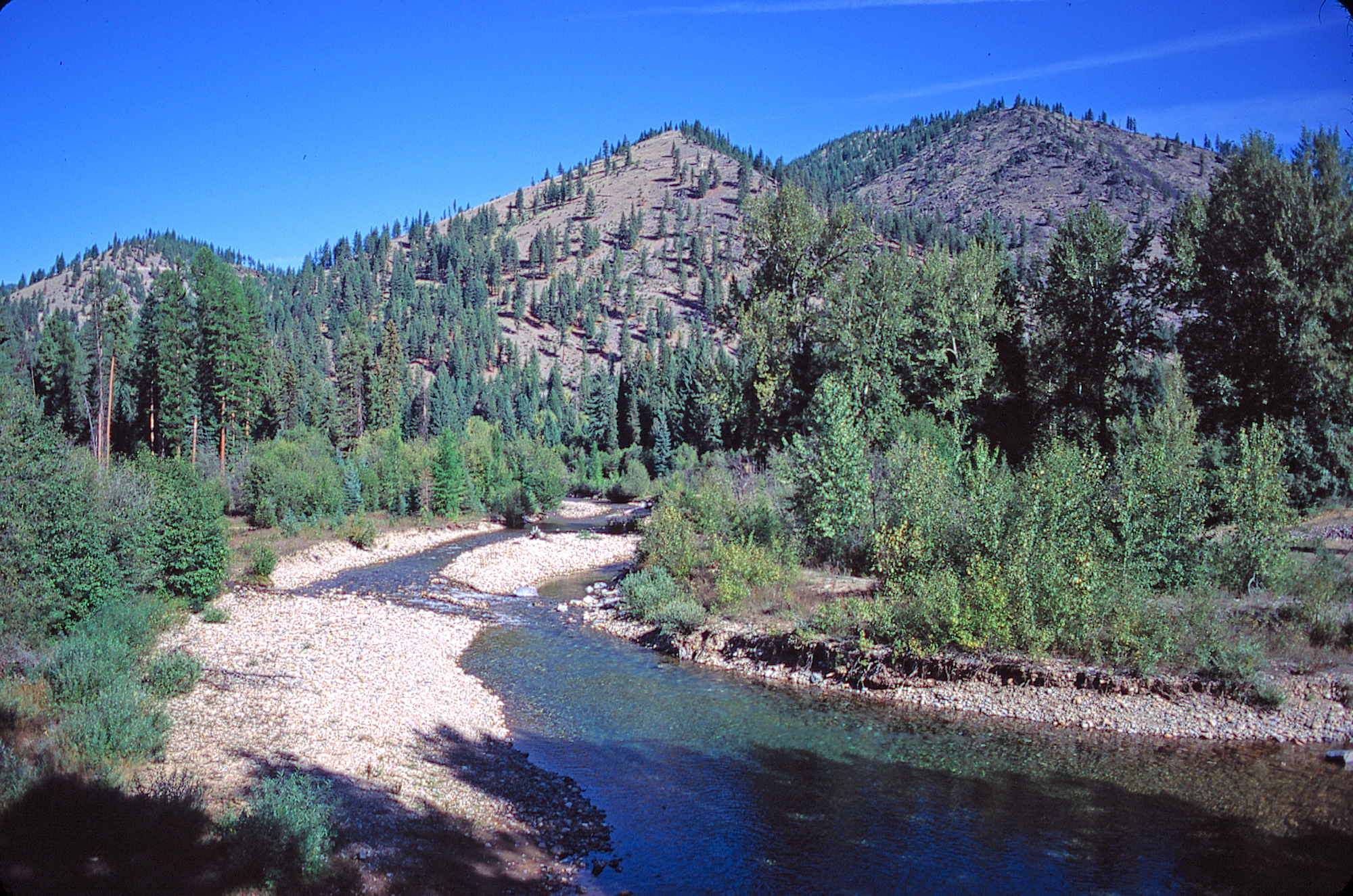


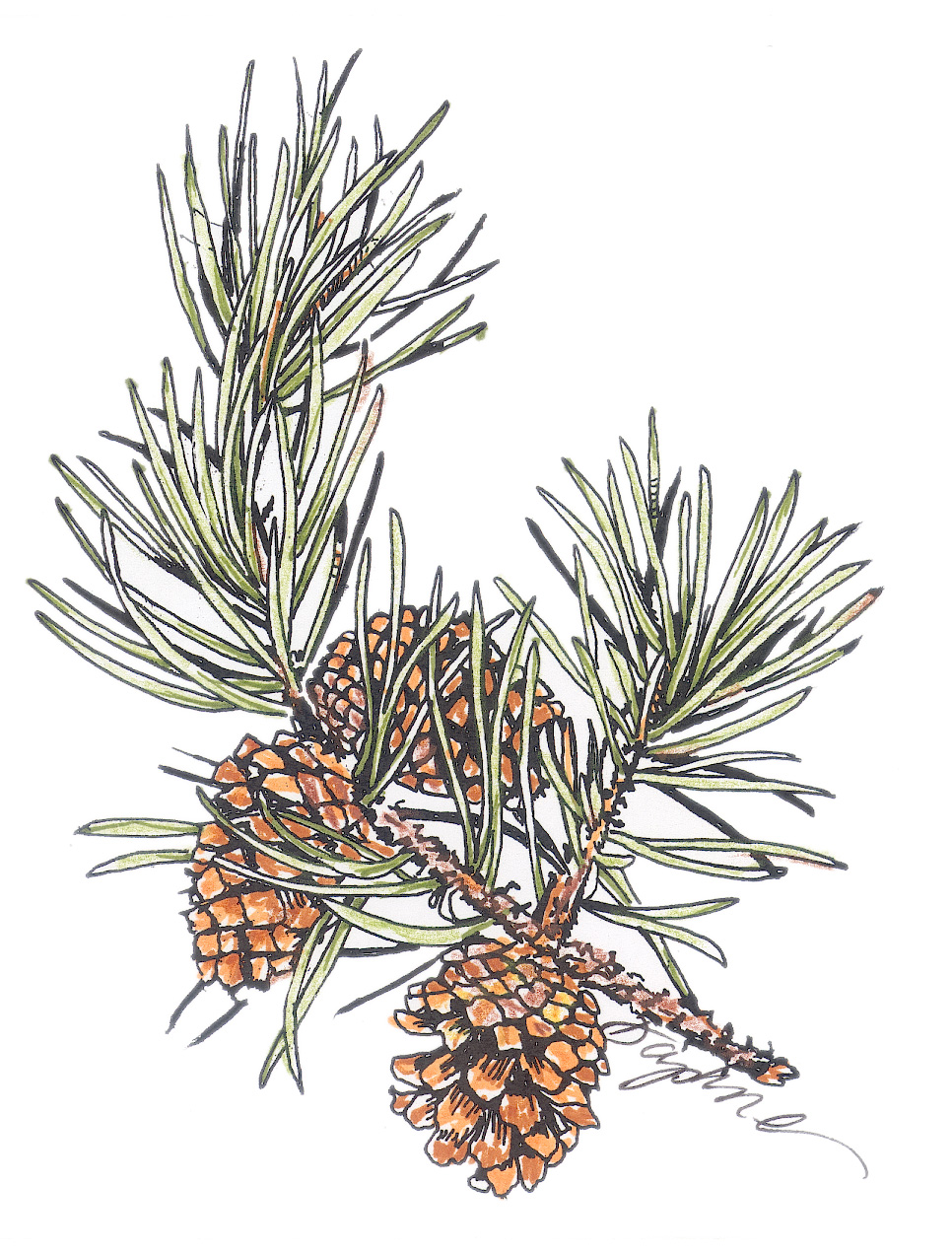
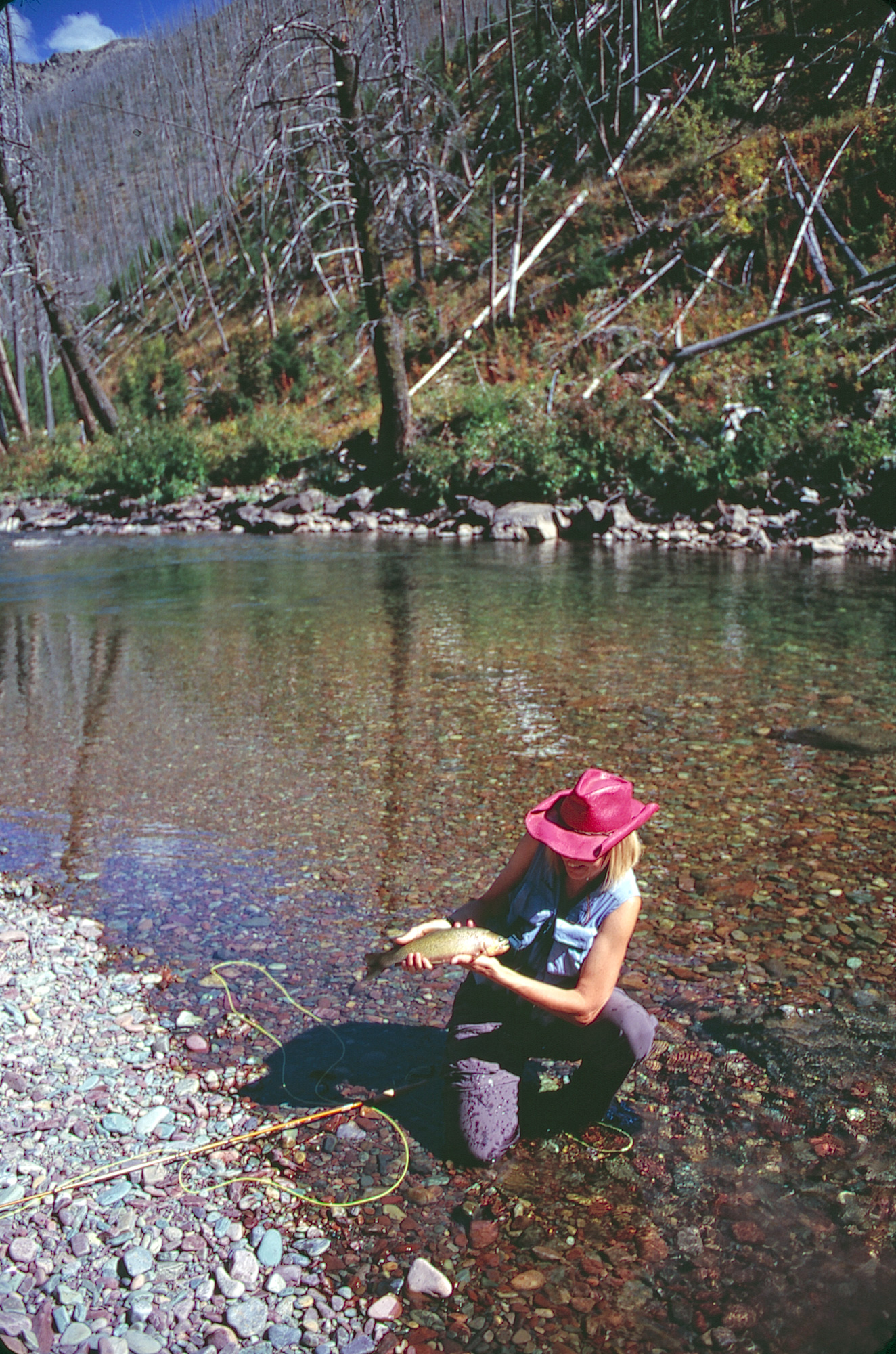
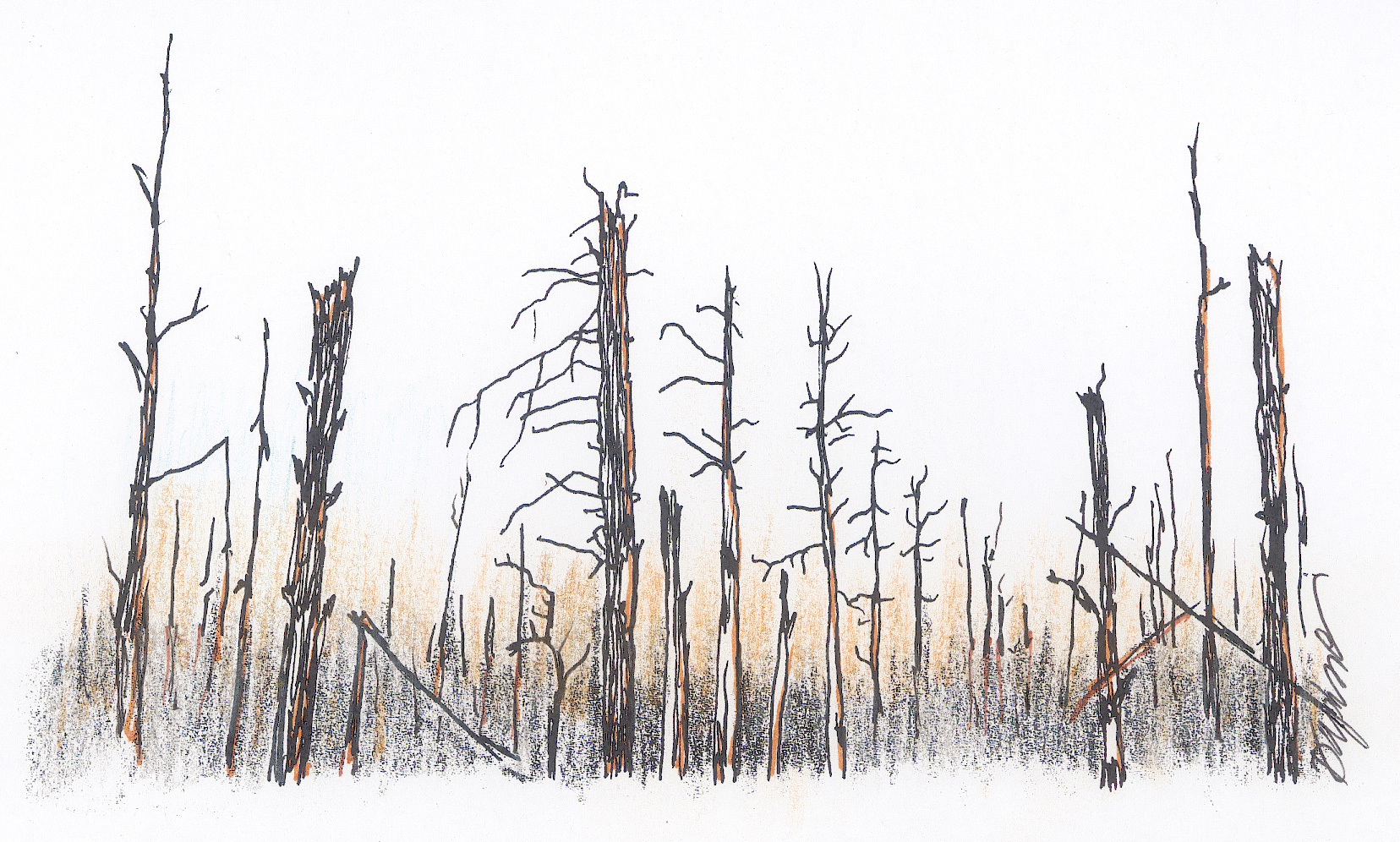

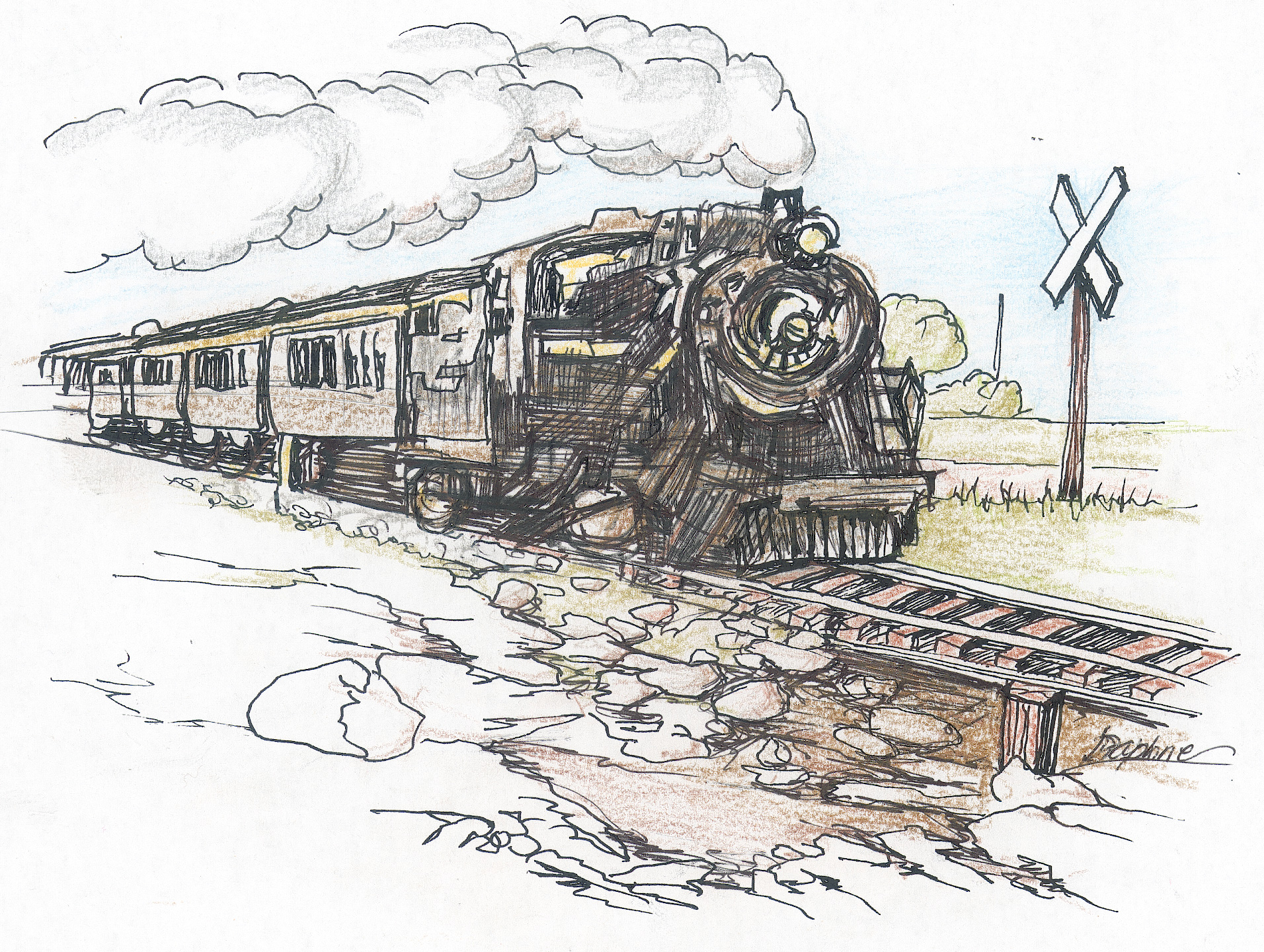
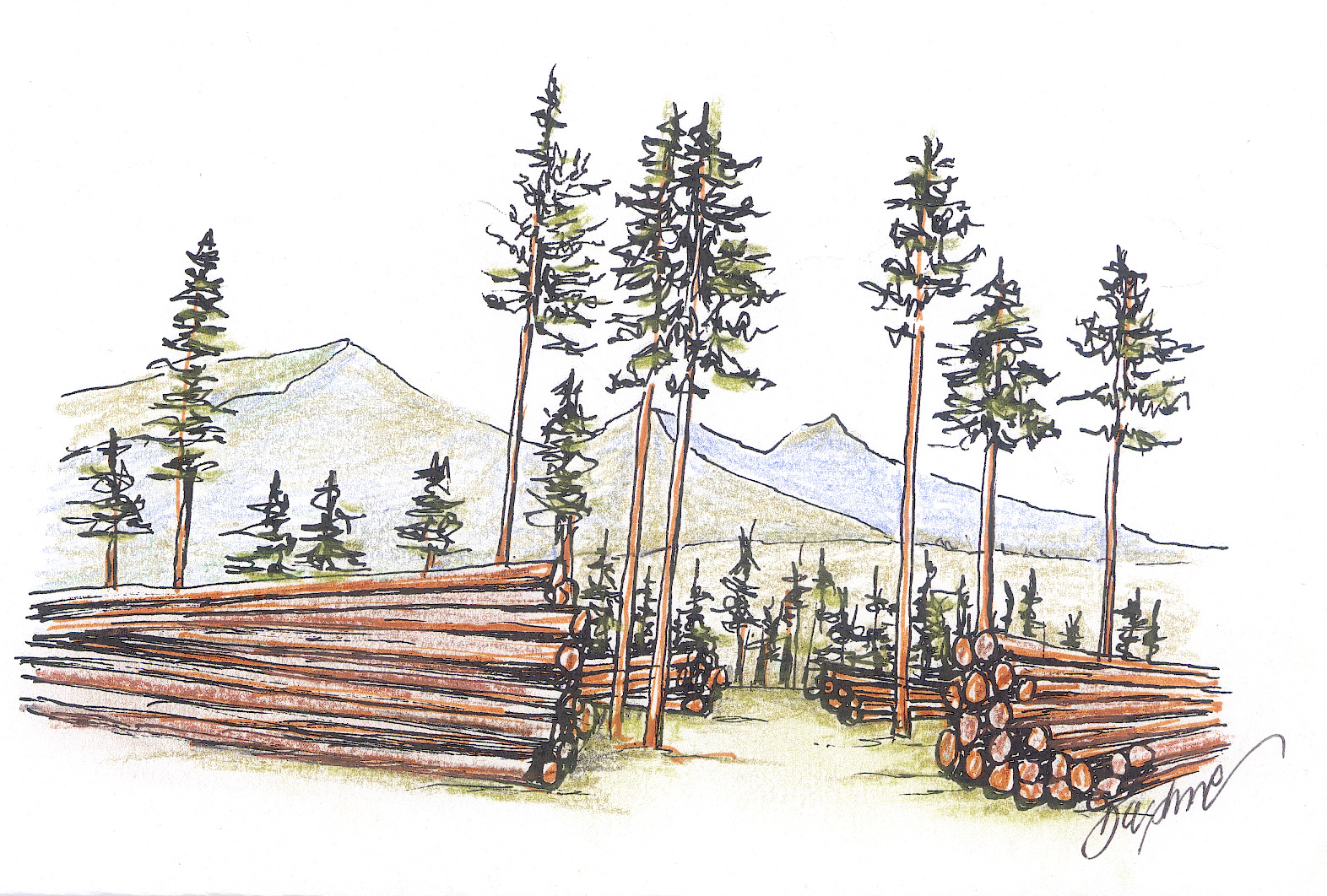
No Comments